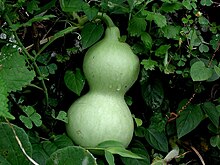The recent epidemic of diabetes mellitus (DM) in Africa, coupled with rampant poverty, is an indication of the urgent need to develop new efficacious, cheaper and more available drugs to face this growing public health challenge. A number of plants products among which the protein-rich Cucurbitaceae seeds are commonly used in traditional medicine with increasing acclaimed efficacy against DM.
The aim of this study was to analyse and evaluate the hypoglycaemic activity of storage proteins of five species of Cucurbitaceae, which include Telfairia occidentalis, Citrullus lanatus, Lagenaria siceraria, Cucumeropsis mannii and Cucurbita moschata.
Methods: The different families of storage proteins were extracted following differential solubility, and their contents were estimated using the Bradford method. The analysis of these proteins was done by electrophoresis in non-denaturing and denaturing conditions.
The evaluation of hypoglycaemic properties of various globulins extracted was performed on male Wistar rats by the oral glucose tolerance test.
Results: The results showed that among the proteins extracted, globulins constitute the most abundant class of storage proteins in all five species selected. Citrullus lanatus and Cucurbita moschata presented the highest levels of globulin (275.34 and 295.11 mg/g dry matter, respectively).
The results of electrophoresis showed that all species possess acidic and neutrals albumins and globulins, with molecular weight of protein subunits ranging from 6.36-44.11 kDa for albumins, 6.5-173.86 kDa for globulins and 6.5-49.66 kDa for glutelins. The 6.36 kDa of albumin subunit protein and the 6.5 kDa of globulin subunit protein were present in all the species.
The oral glucose tolerance test showed that the globulins of the seeds of all species except Cucumeropsis mannii caused significant drop in blood sugar (88 -- 137.80%, compared to the controls, p<0.05).
Conclusions: These findings showed that the selected Cucurbitaceae seeds contained globulins with significant anti-hyperglycaemic activity. It is therefore highly encouraged to pursue investigations towards development of peptide-drugs and/or phytomedicines from these bioactive proteins which could be used as affordable alternative therapy against DM.
Author: Clautilde Mofor Teugwa, Thaddée Boudjeko, Bruno Tugnoua Tchinda, Pascaline Chouadeu Mejiato and Denis Zofou
Credits/Source: BMC Complementary and Alternative Medicine 2013, 13:63
Data: 18.03.2013
Link:
http://7thspace.com/headlines/434327/anti_hyperglycaemic_globulins_from_selected_cucurbitaceae_seeds_used_as_antidiabetic_medicinal_plants_in_africa.html







http://pt.wikipedia.org/wiki/Melancia (Citrullus lanatus)

http://en.wikipedia.org/wiki/Calabash (Lagenaria siceraria)


Nenhum comentário:
Postar um comentário